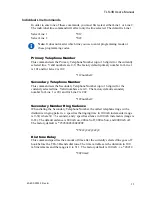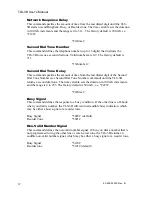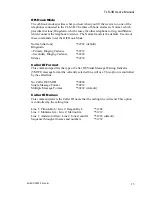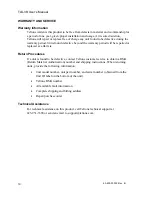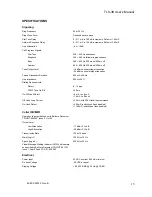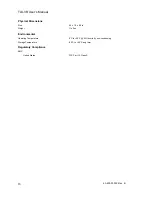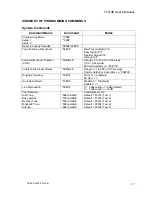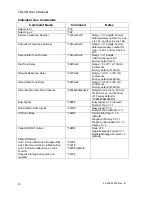
TLS-3B User’s Manual
40-400-00032, Rev. B
7
Please note the following items when using Caller ID equipment:
•
Some Caller ID devices cannot display the calling name and, therefore,
do not accept the Multiple Message Format (default). If this is the
case with your device, use the Single Message Format instead.
•
Caller ID will be sent during the first 3-second silence in the ring
cycle. If you change the distinctive ringing cycles, remember that a 3-
second silence is required for the Caller ID information to be sent. (If
there is not at least a 3-second silence, Caller ID will not be sent).
•
Some Caller ID Devices require a 7-digit telephone number. If this is
the case with the device you are using, program the TLS-3B with 7-
digit numbers.
Using Caller ID Prefixes
Caller ID messages can be changed with one of three prefixes, entered before the
number you are dialing:
*67 = Private
*87 = Out of area call
*88 = Check sum error
For example, dialing *67 102 will ring Line 2 (assuming the default phone numbers
are used) and change the Caller ID message to a private message.
Dialing *87 102 will change the Caller ID message to an “out of area” call. The
Caller ID display will indicate that the call originated form an area in which Caller ID
is unavailable.
Note:
Depending on the type of Caller ID display you are using, if private or
out-of-area feature is invoked, the date and time will be shown, but not the
number or name.
Dialing *88 102 will simulate a Caller ID checksum error. The Caller ID display will
indicate that an error occurred in Caller ID transmission.
Note:
Caller ID displays react differently to a checksum error. Some attempt to
display the data, others display “line error”, and others ignore the data. Also,
some Caller ID displays require a 7- or 10-digit number. If this is the case with
the device you are using, program the TLS-3B with 7- or 10-digit numbers as
required.

















